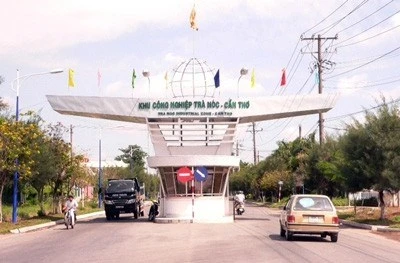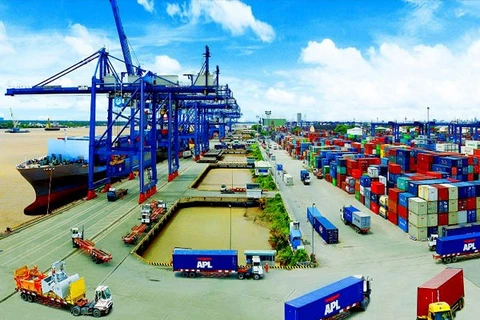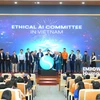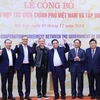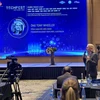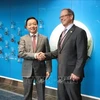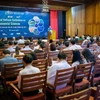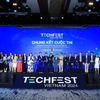Hanoi (VNA) - Technology is seen as one way to help domestic logistic enterprises cut costs to gain an edge amidst higher demand in global transport.
A survey by Vietnam Logistics Association (VLA) revealed that 87 percent of logistic enterprises agreed that technology creates a competitive edge and 83 percent it’s up to them to better use technology.
IT use in Vietnamese logistic firms, though at a medium level compared to the world, has increased in recent years.
About 40-50 percent of businesses have used technology in transportation, higher than the 15-20 percent two years ago. Some big firms have even utilised technology from the world’s leading companies such as Oracle and IBM.
However, as most of them are small and medium sized enterprises (SMEs), they mostly use mandatory applications such as customs declaration software Manifest on the national one-stop system or truck positioning software. Only 10-15 percent of companies use technology to manage transportation, vehicles or warehousing.
According to VLA’s chairman Dao Trong Khoa, it is high time for logistic firms to apply technology in their business as the local industry is facing many challenges, including increasing complexity in global transport, higher customer demand and declining profit margins.
The boom of e-commerce is changing the market, as the size of each order is getting smaller while the number of orders is getting bigger. Moreover, the workflow of local companies overlaps which causes waste and higher costs.
According to him, digital bills of lading can allow businesses exchange information with authorities across the border without the need for paper. Digitalising waybills also helps create big data, so firms can exploit this data to grow their business.
Nguyen Nang Toan, Director of Saigon Newport Logistics Centre under the Saigon Newport Corporation, said technology was considered an investment for the company, not a cost.
The Saigon Newport Corporation is a big logistics company which accounts for half of Viet Nam’s market share of container shipping services and uses Oracle’s logistics solutions. But according to Toan, local SMEs can use ‘local’ software suitable for their business scale and financial capability.
He emphasised unsuitable solutions or technology may extend time and raise costs without getting results.
Khoa suggested the government deliver solutions to improve transport infrastructure, reduce environmental charges and build-operate-transfer fees to help reduce logistics fees.
Logistics cost in Vietnam are still high, accounting for 16.8 percent of enterprises’ costs, higher than the average of 12.5 percent in Asia-Pacific, in which transport cost accounts for up to 50 percent.
Regarding transport and logistics, the State should plan wharves and transport grounds to avoid traffic jams and unreasonable expenses, he said, adding that the Ministry of Industry and Trade should advise on the re-construction of the logistics centre.
He also proposed the use of electronic delivery order with digital signature in all transactions which will help save cost and time and eliminate the risk of carrying cash.-VNA
VNA


